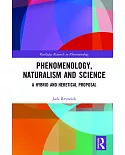This book sheds light on the phenomenon of consecutive interpreting. It combines phenomenological and empirical analyses to build a communication theory of interpreting. The author begins by
reviewing mainstream research on consecutive interpreting and then dissociates himself from it, conducting a three-tier analysis of interpreting data. He concludes by presenting an
alternative theory of consecutive interpreting. As he makes clear from the outset, a new and combined methodology for consecutive interpreting needs to be constructed to satisfy both the
relation of the phenomenon to experience as well as its social foundation. He also stresses the potential within the humanities for wider employment of the phenomenological empirical method.
This book will appeal to students and scholars of linguistics, translation, phenomenology, social interaction and communication



